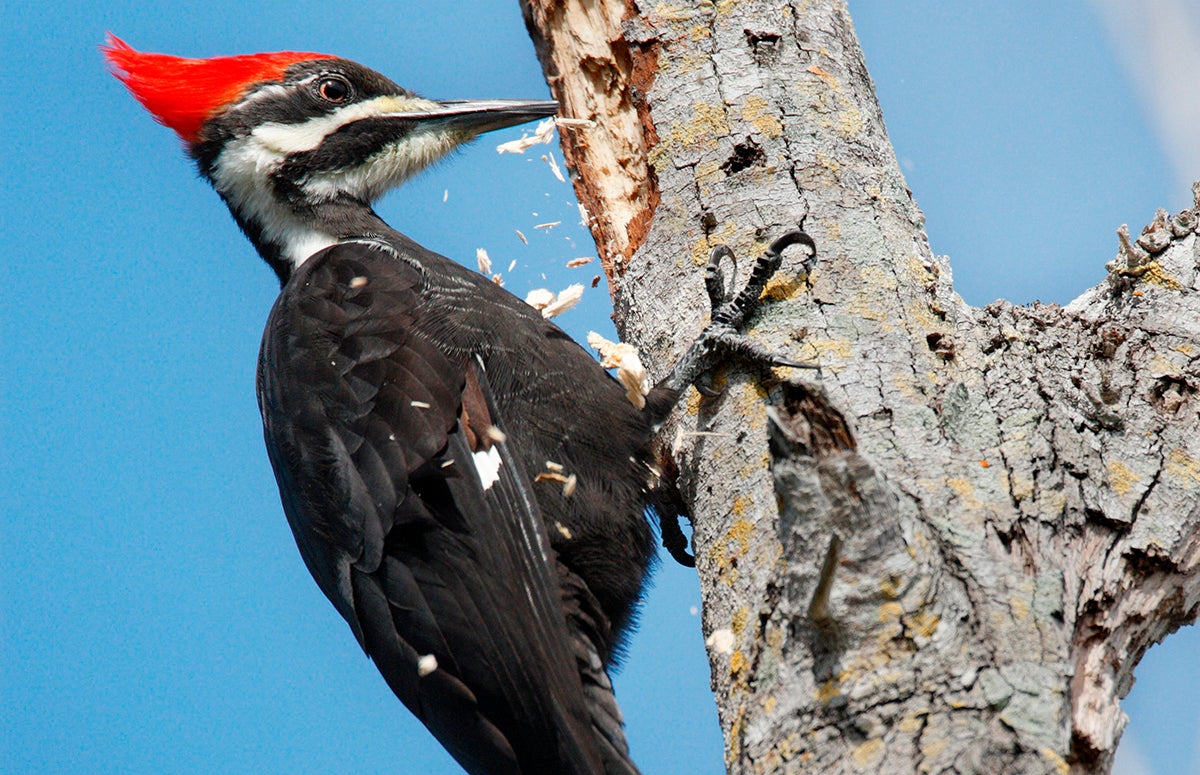Woodpeckers in Florida Population: Variety Introduction and Conservation
Woodpeckers in Florida Population: Variety Introduction and Conservation
Blog Article
Discover the Remarkable Globe of Woodpeckers: Every Little Thing You Need to Know
The globe of woodpeckers is a realm loaded with distinct behaviors, elaborate adaptations, and a varied array of species. From their environments and distribution patterns to their feeding practices and specialized anatomical attributes, woodpeckers have actually long captivated the rate of interest of ornithologists and nature fanatics alike.
Woodpecker Habitats and Distribution
Woodpeckers occupy a varied array of settings worldwide, showcasing adaptability in their distribution patterns. These resistant birds are found in forests, timberlands, savannas, and deserts throughout various continents, demonstrating their capability to flourish in various weather conditions. In The United States and Canada, for instance, woodpeckers can be spotted in both coniferous and deciduous woodlands, using their strong beaks to forage for insects and develop nesting dental caries in trees. In Africa, specific woodpecker species have adapted to dry environments, such as the acacia forests, where they play a critical duty in regulating insect populaces.

Feeding Behaviors and Diet Plan
Woodpeckers use their solid beaks to drill into the bark of trees, probing for pests and larvae hidden under the surface. In addition to bugs, woodpeckers also consume nuts, seeds, fruits, and sap.
Woodpeckers are recognized for their drumming behavior, which serves not only to connect with other woodpeckers yet additionally to locate food. The fast drumming audio is produced by the bird pecking on resonant surface areas like dead trees or metal posts. This actions can bring in bugs concealed in the timber, enabling the woodpecker to identify their presence and prey on them.
Special Adaptations for Tree Climbing
In their experienced pursuit of bugs concealed within tree bark, woodpeckers have progressed impressive anatomical attributes that equip them with special adaptations for effective tree climbing. One of the essential adjustments is their zygodactyl feet, with two toes aiming ahead and two directing backward, providing a strong hold on tree trunks. This customized foot plan enables woodpeckers to stick to upright surfaces easily, enabling them to move up and down trees with agility. Furthermore, woodpeckers have stiff tail feathers that act as a helpful prop while they climb up, assisting in balance and stability. Their strong, chisel-like beaks are not only utilized for boring into wood however also for gripping onto bark as they ascend tree trunks. Woodpeckers have solid neck muscular tissues and a distinct head structure that soak up the impact of consistent pecking, permitting them to climb up up and down without triggering damage to their brains. These adjustments display the amazing transformative style that makes it possible for woodpeckers to navigate trees with accuracy and effectiveness.
Diverse Woodpecker Types Worldwide
With over 200 various species spread out across numerous habitats worldwide, the household of Picidae encompasses a remarkable diversity of woodpeckers. These birds can be located in woodlands, timberlands, savannas, and look at this now even metropolitan locations, showcasing their flexibility to various atmospheres. From the legendary Northern Flicker in North America to the colorful and elusive Crimson-backed Flameback in Asia, each woodpecker types exhibits one-of-a-kind characteristics in terms of quill, behavior, and environment choice.
Woodpeckers vary substantially in dimension, with the small Downy Woodpecker determining around 6-7 inches in size, while the effective Lineated Woodpecker can reach up to 17 inches - Woodpeckers in Florida. Their beaks also can be found in various forms and dimensions, mirroring their feeding practices. Some varieties concentrate on drawing out insects from tree bark, like the Acorn Woodpecker, while others, such as the Black-cheeked Woodpecker, eat fruits and seeds
)
Conservation Efforts and Obstacles
Conservation campaigns for woodpecker populaces are vital in mitigating the effect of environment loss and other dangers encountering these varied bird varieties. Woodpeckers face numerous challenges to their survival, mainly as a result of logging, urbanization, climate modification, and invasive types. To attend to these concerns, preservation efforts concentrate on securing and bring back woodpecker habitats, carrying out sustainable forestry practices, and increasing go to this site awareness regarding the importance of these birds in communities.
One considerable difficulty in woodpecker conservation is the fragmentation of their habitats, leading to separated populaces that are a lot more at risk to extinction - Woodpeckers in Florida. Guardians work to create wild animals passages and secured locations that connect these fragmented environments, permitting woodpeckers to move in between various areas for feeding, breeding, and shelter

Final Thought
Finally, woodpeckers are fascinating birds with one-of-a-kind adjustments for tree climbing and feeding actions. They can be discovered in diverse environments worldwide, facing conservation challenges as a result of habitat loss and human tasks. Recognizing their environments, diets, and habits is essential for conservation initiatives to safeguard these essential bird This Site varieties. More study and conservation actions are needed to make sure the survival of woodpeckers in the wild.
Report this page